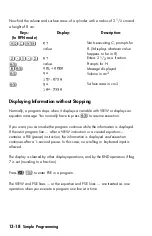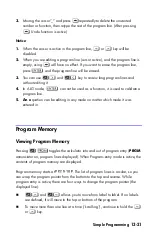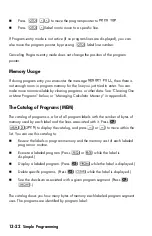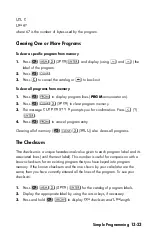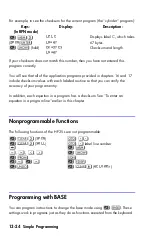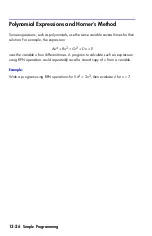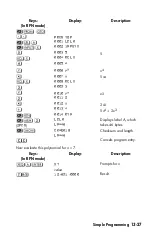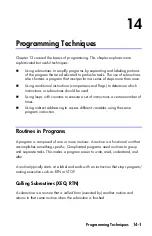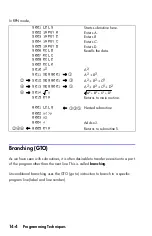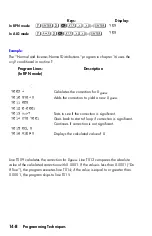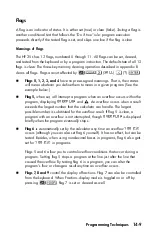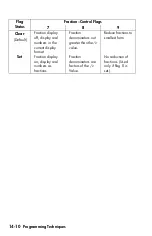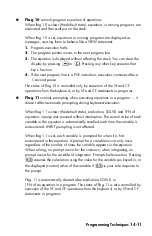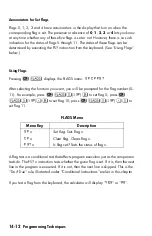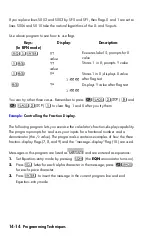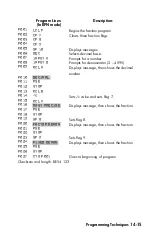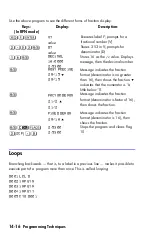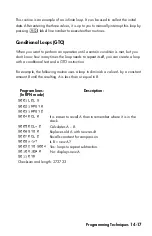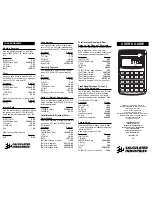
14-2
If you plan to have only one program in the calculator memory, you can
separate the routine in various labels. If you plan to have more than one
program in the calculator memory, it is better to have routines part of the
main program label, starting at a specific line number.
A subroutine can itself call other subroutines.
The flow diagrams in this chapter use this notation:
The example below show you to call a subroutine to change the sign of the number
you input. Subroutine E that is called from routine D by line
changes sign of the number. Subroutine E ends with a RTN instruction that sends
program execution back to routine D (to store and display the result) at line D004.
See the flow diagrams below.
Nested Subroutines
A subroutine can call another subroutine, and that subroutine can call yet another
subroutine. This "nesting" of subroutines — the calling of a subroutine within
another subroutine — is limited to a stack of subroutines 20 levels deep (not
counting the topmost program level). The operation of nested subroutines is as
shown below:
1
Program execution branches from this line to the
line number marked
1
("from 1").
1
Program execution branches from a line number
marked
1
("to 1") to this line.
Starts here.
1
Calls subroutine E.
2
Returns here.
1
Starts subroutine.
Change sign of the number
2
Returns to routine D.
Summary of Contents for 35s
Page 1: ...HP 35s scientific calculator user s guide H Edition 1 HP part number F2215AA 90001 ...
Page 14: ...12 Contents ...
Page 15: ...Part 1 Basic Operation ...
Page 16: ......
Page 46: ...1 30 Getting Started ...
Page 63: ...RPN The Automatic Memory Stack 2 17 A Solution ...
Page 64: ...2 18 RPN The Automatic Memory Stack ...
Page 74: ...3 10 Storing Data into Variables ...
Page 180: ...12 14 Statistical Operations ...
Page 181: ...Part 2 Programming ...
Page 182: ......
Page 246: ...15 12 Solving and Integrating Programs ...
Page 270: ...16 24 Statistics Programs ...
Page 284: ...17 14 Miscellaneous Programs and Equations ...
Page 285: ...Part 3 Appendixes and Reference ...
Page 286: ......
Page 308: ...B 8 User Memory and the Stack ...
Page 322: ...C 14 ALG Summary ...
Page 336: ...D 14 More about Solving ...
Page 346: ...E 10 More about Integration ...
Page 352: ...F 6 Messages ...
Page 370: ...G 18 Operation Index ...
Page 382: ...Index 12 ...



